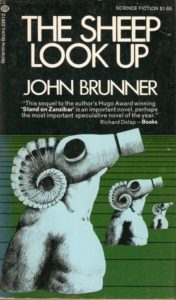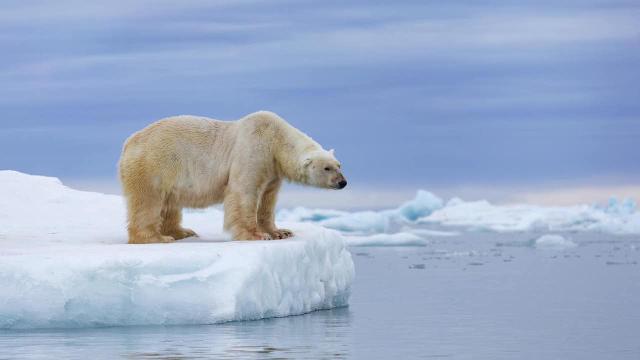Smog-ridden cities. Endless war. Water so polluted it cannot be drunk. Crop failure. Acid rain. A pandemic of antibiotic-resistant diseases. Declining life expectancy and human fertility. Endangered bees, collapsing agriculture. Mass extinctions have finished off most birds and fish. Only the wealthiest can afford quality organic food, while the poor subsist on lab-produced junk (with added tranquillisers). A celebrity president peddles misinformation in tweet-like slogans. A disillusioned academic tries in vain to bring about change, while his followers block roads and resort to terrorism.
This is not a bad dream version of recent climate change headlines. This is the dark vision in the 50-year-old dystopian novel, The Sheep Look Up, by John Brunner. A British author, Brunner was one of a handful of writers who were early advocates of environmental activism.

No more heroes
Experimental in style, bleak in outlook, the novel is short on heroes and villains. The chapters follow 12 months in which the United States gradually collapses as unrestricted pollution wipes out the water and food supply. Some of its best lines go to Austin Train, an environmentalist who attempts to persuade others that that they must act now to protect human life. But throughout the novel he is mostly ignored.
The book is a reminder that the courage of activists such as Greta Thunberg and Vanessa Nakate should not be ridiculed or ignored, but celebrated for speaking truth to power. All of us must heed their warnings and act now to reduce our impact on global heating. Western countries have become too dependent on outsourcing our pollution to far away lands. It’s time to stop outsourcing our dissent.
Failure to act
Brunner wrote his novel the same year that the Club of Rome, an international group of policymakers, economists and business leaders, published their influential report The Limits to Growth. Using computer projections, it warned that the planet lacked the resources to sustain current projections of human consumption and growth.
Brunner was surprised that more people weren’t alarmed. The Sheep Look Up warns about what happens when people fail to act against an unfolding catastrophe. While the present might be endurable, the future will not be, as demonstrated in the recent scenarios forecast in the most recent IPCC report.From the early 1960s there were signs that human activity was starting to be linked to environmental damage. Author Rachel Carson wrote her acclaimed Silent Spring in 1962 – and in 1965 the U.S. science advisory committee report wrote to U.S. president, Lyndon Johnson, about the dangers of air pollution.
As one of Brunner’s characters observed: “This is the future, unless we prevent it.”
Fiction’s influencers
Some early readers drew a bleak analysis that environmental activism was futile, but many read it as a call to action. Brunner used sci-fi as a form of social and political criticism, something that was fairly new at the time.
Abstract projections about emissions, droughts and pollutions can be hard to grasp. But research shows that fictional narratives and metaphors have a significant role in helping us understand complex social issues.
Storytelling helps us recognise the consequences of our decisions to act or not act, as we follow the impact of choices made by characters.
Around the world, psychologists and clinicians are now observing a condition called “climate anxiety” or “eco-anxiety”. As the name suggests, it’s marked by anxiety, panic attacks, depression and feelings of anger and betrayal. A recent global survey of 10,000 young people found that 75 per cent felt that the future was frightening and that 59 per cent were very or extremely worried about climate change.
But what some researchers and campaigners have also found is that anxiety reduces when people get together and focus on collective action.
Great storytelling is all about revealing the choices that lie before us. And this is all part of Brunner’s technique. It connects the great 20th-century dystopias of George Orwell and Aldous Huxley to the modern-day climate fiction of Margaret Atwood and Amitav Ghosh.
What next?
Brunner’s dire predictions have not completely come to pass. Clearly there have been dramatic and dangerous environmental changes, but also steps forward in knowledge. This year marks the 50th anniversary of the United Nations Environment Programme, and the 30th anniversary of the Rio de Janeiro Earth Summit.
There have been some important achievements in curbing pollution, from the Montreal Protocol to the 2015 Paris Agreement. And around the world, voices young and old are now demanding urgent, systemic change, something that might have surprised Brunner.![]()
Dan Taylor, Lecturer in Social and Political Thought, The Open University
This article is republished from The Conversation under a Creative Commons license. Read the original article.
